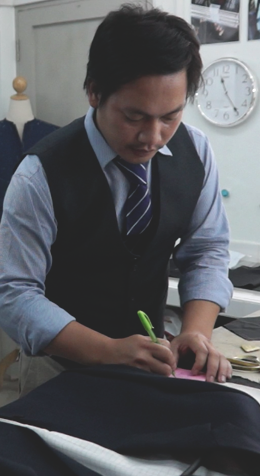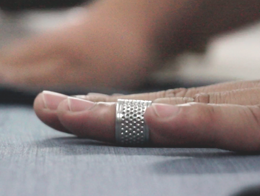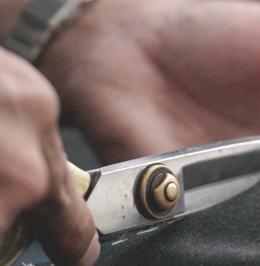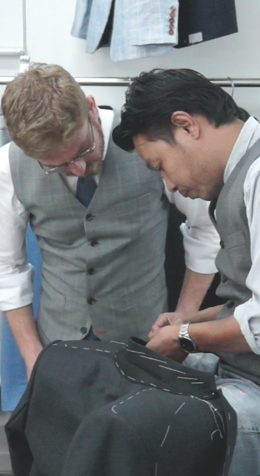TAILOR ON TEN’S IN-HOUSE PRODUCTION
We have a full-time team of in-house tailors, cutters, and stitchers who are paid fair monthly salaries, not per piece. As such, they have no incentive to rush through work or cut corners. As they work for us year-round we are able to develop and maintain standards and produce at a consistently high quality.
We control every aspect of our production. We have personally sourced, purchased and maintain a huge range of industry standard machines. In our shop, we have four full-time tailors working, who draw patterns, cut, stitch and alter in front of our customers. At any time during the day clients can see (and hear!) our tailors working.
QUALITY CONTROL
We have a dedicated and full-time quality control team who spend all day inspecting each and every garment that we produce, ensuring quality of workmanship, sizing and that every product meets our exact requirements.

DO TAILORS IN BANGKOK ACTUALLY PRODUCE IN-HOUSE?
In short, no. If you do not see tailors in the shop working, if you are not offered a selection of buttons, linings and other bespoke details as part of your ordering process, it is almost certain that they are not producing for themselves and are outsourcing.
The tailoring industry in Thailand has evolved over the last 40-50 years to accommodate the highs and lows of the tourist season. During peak season, many tailor shops are bursting at the seams, full of customers, while in low season (6 months of the year), the shops are empty.
Rather than each shop making the big investment to set up their own professional tailoring workshop, the tailors themselves have set up their own small factories where they accept work from many different shops. This increases their chances of receiving work all year round.
They charge the tailor shops a set price per garment and the tailor shop provides them with the fabric ordered, but none of the other items required (i.e. thread, shoulder pads, etc.). This means that the shops have absolutely no control over the quality of the garments and have no idea about the construction techniques. The quality that is put out varies, is uncontrolled, and as a general rule, is quite poor. The people doing the tailoring want to maximize profit and use the cheapest materials available. As payment is made per piece, the more pieces they stitch, the more money they make, which obviously compromises quality.












